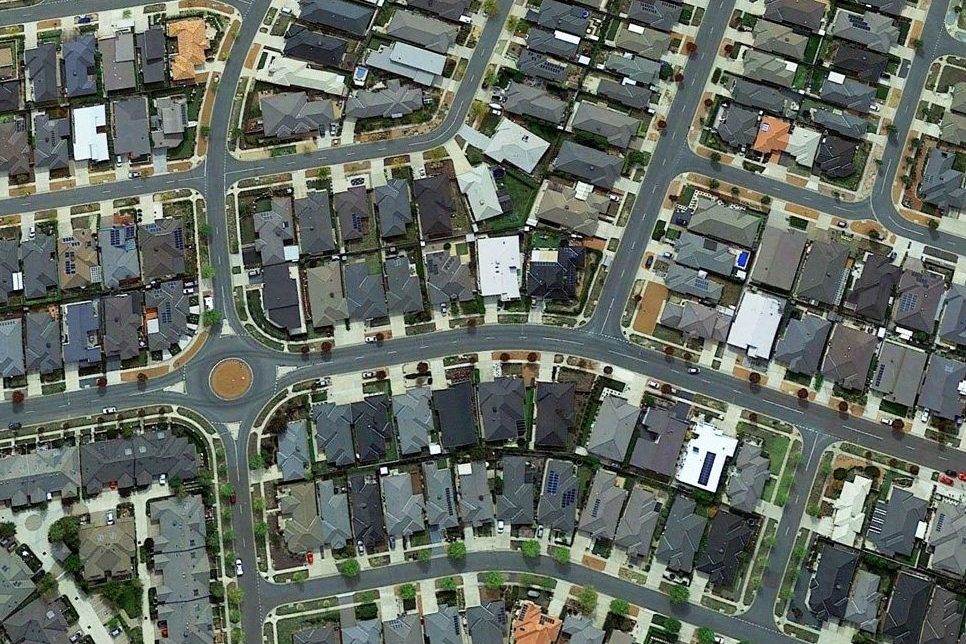
“Until investigations demonstrate its merits, any attempt to introduce an urban growth boundary should be resisted. Like light rail, it could be an inadequate and simplistic response to complex issues,” writes former planner MIKE QUIRK.
Last month’s ACT State of the Environment Report 2023 argued for a concerted focus on infill development and consequently recommended for the legislation of “an urban growth boundary to contain urban expansion and achieve a compact, liveable and efficiently designed Canberra.”

Urban expansion has long been recognised as a threat to areas of high conservation value. The ACT’s two most threatened ecological communities (natural grasslands and box-gum woodlands) are required to be protected under both federal and ACT existing environment laws.
The report notes possible future urban areas are subject to independent statutory environmental and development assessment processes designed to avoid and minimise environmental impacts and that sustainability principles are increasingly being incorporated in new developments to improve their liveability and to reduce the environmental impacts.
These measures include retaining habitat trees, enhancing active travel routes, establishing mandatory energy efficiency requirements for new buildings and implementing water sensitive urban design principles to manage stormwater runoff.
However, the Commissioner argues the protections in place are insufficient to eliminate significant negative impacts on areas of high conservation value outside of reserves. They include the loss of habitat, disturbance of ecological communities, tree loss, increased urban edge effects, and increased sedimentation and erosion.
Furthermore, she has concerns about the potential environmental impacts of development within the Western Edge Investigation Area (approximately 9800 hectares in across Belconnen, Stromlo, Tuggeranong, and Weston Creek) identified in the 2018 ACT Planning Strategy.
But is the introduction of an urban growth boundary (UGB) an appropriate response?
Action on taxation is unlikely given the difficult politics
Infill will be central to planning strategies because of the environmental, travel and infrastructure benefits it provides. Before an UGB can be considered several fundamental issues – impacts on the region (the ACT is not an island), housing choice and affordability and on the environmental quality in established areas – need investigation.
Increased housing costs are a consequence of taxation policies and inadequate housing supply. Timely and meaningful action on taxation is unlikely given the difficult politics.
The undersupply of detached dwelling in the ACT, arising from the current 70 per cent infill policy, has contributed to increasing prices and the growing price differential between separate houses and higher-density dwellings.
An UGB would further encourage the transfer demand for detached dwellings to surrounding NSW. The level of car use in such subdivisions is high, as they have poorer public transport than subdivisions in the ACT. It also implicitly assumes the environmental damage from increased land development in the region is lower than greenfields development in the ACT.
An UGB also assumes most new dwellings required to accommodate the city’s growth can be supplied through redevelopment.
While the demand for higher-density dwellings is growing from increased numbers of single and couple households, reduced housing affordability and the increased concentration of employment services in inner areas, a strong preference remains, especially from households with children, for detached dwellings.
Most infill dwellings developed have been apartments, which often do not meet the needs of households in terms of number of bedrooms, storage space, communal open space and orientation. Few medium-density dwellings, attractive to a wide range of households, have been constructed. Those constructed have been unaffordable to those in housing need. Too often redevelopments are of poor quality (loss of tree cover, poor solar access, parking blight and traffic congestion).
Failure of public housing supply to keep pace
The shortfall in affordable housing is partly a product of the failure of the public housing supply to keep pace with population growth. The supply of public housing dwellings declined from 10,956 in 2012 to 10,827 in 2023, while the population increased by more than 90,000.
Even with adjustments to planning policies to address the “missing middle”, medium-density redevelopments are unlikely to be affordable to those on lower incomes. Consequently, the design of apartments needs to be improved to better meet the requirements of households.
Rather than the arbitrary imposition of an UGB, a regional development strategy should be prepared in conjunction with NSW governments to determine the most appropriate pattern of development.
It would evaluate the merits of alternative distributions of population and employment including scenarios with varying levels of infill and greenfields development.
The assessments would include environmental impact, infrastructure cost, housing preferences and housing affordability.
They would assess strategies to further reduce the impacts of greenfield subdivisions and redevelopments on the environment; to improve apartment design; into the feasibility of development in areas such as Kowen (a pine forest) and west Murrumbidgee; the potential to extend water supply and bus services to the region and investigate measures to improve the quality of greenfields development including tree retention, reduced site coverage the dispersal of employment and improved transport connections.
Until investigations demonstrate its merits, any attempt to introduce an UGB should be resisted. Like light rail, it could be an inadequate and simplistic response to complex issues.
Mike Quirk is a former NCDC and ACT government planner.
Who can be trusted?
In a world of spin and confusion, there’s never been a more important time to support independent journalism in Canberra.
If you trust our work online and want to enforce the power of independent voices, I invite you to make a small contribution.
Every dollar of support is invested back into our journalism to help keep citynews.com.au strong and free.
Thank you,
Ian Meikle, editor




![Teacher Vanessa Jones has been living in Higgins since 2001, and while she loves the area, she says she is “fed up” with the neglectful ACT government.
The Higgins shops have been completely abandoned, says Vanessa, preventing the opportunity for residents to have a community-centred space to socialise.
They only received bins nine months ago, she says, and requests for a water station and repairs to the bus station have gone unanswered.
“It’s very, very slow,” says Vanessa.
“I asked for the zebra crossing on Fullagar [Crescent] to be repainted, and we had to wait about six or nine months.
“That’s just such a long time… we pay a lot of rates.”
Vanessa says assistance from the government only seems to go to communities with time-rich and assertive communities, leaving places such as Higgins, where the majority of households have both adults working full-time and English may not be the first language of the family, at an automatic disadvantage.
“If you’ve got two people working, paying a mortgage, raising two or three kids, they don’t have the time,” says Vanessa.
Vanessa says the lack of attention quieter places such as Higgins is receiving is starting to look a lot like favouritism.
Read the full article on our website citynews.com.au
#canberra #canberranews](https://citynews.com.au/wp-content/plugins/instagram-feed/img/placeholder.png)
Leave a Reply